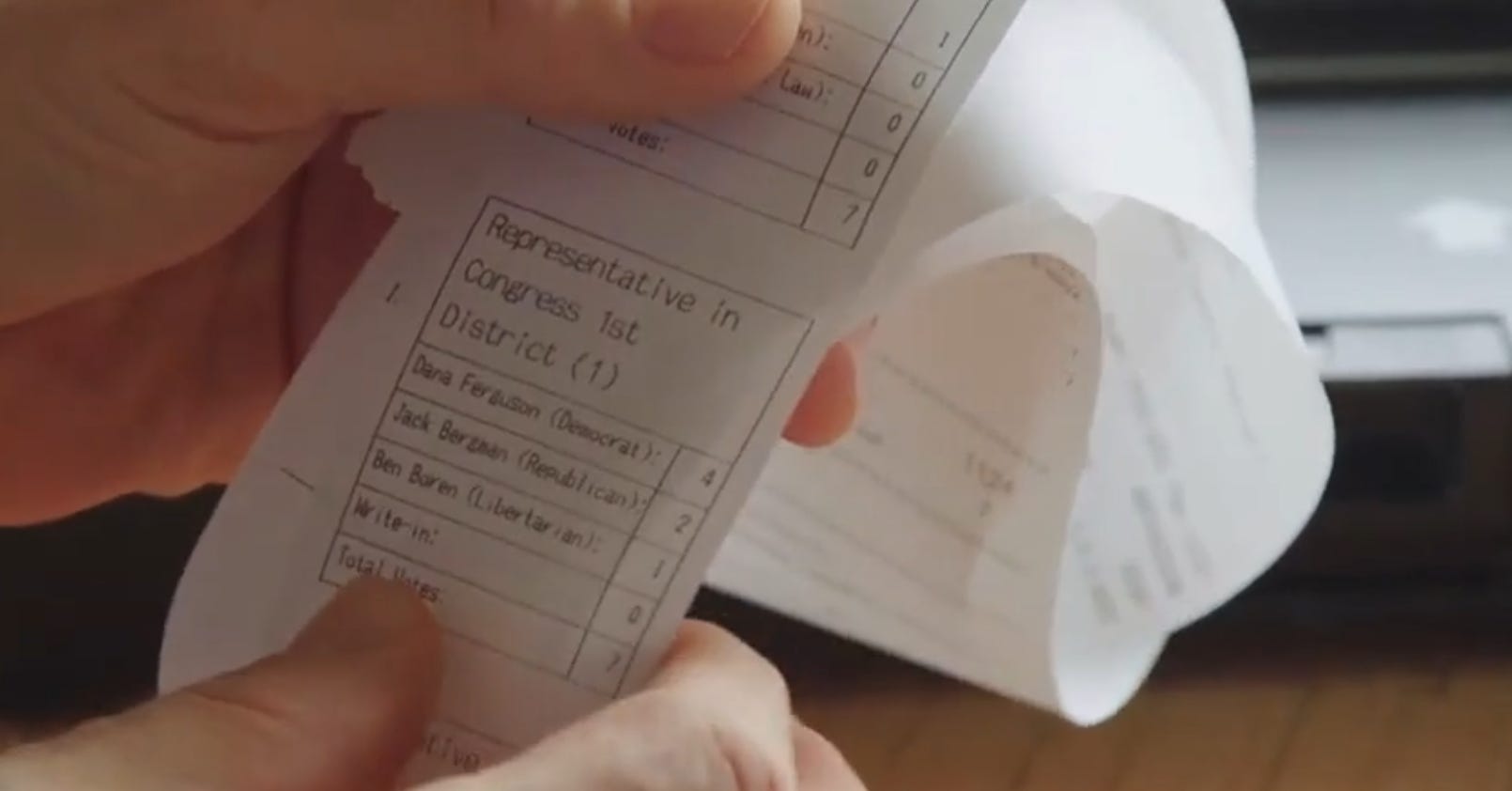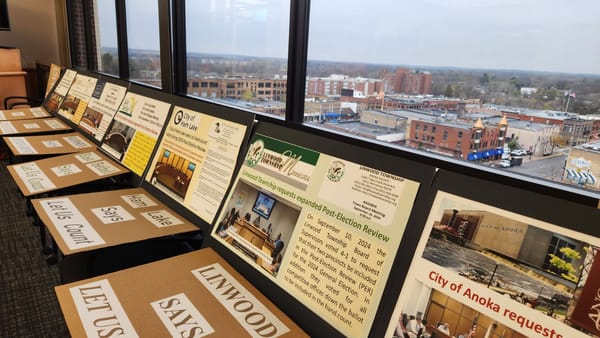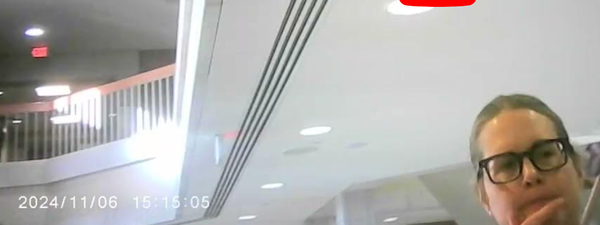What do election judge signatures mean?
Not much anymore, but they should
In recent Linwood Township board meeting, Town Clerk Pam Olson correctly stated that election judges are not able to verify candidate level vote tabulation accuracy because it is the machine tabulator that does that.
A summary tape that looks like a restaurant receipt is printed out of the tabulator and the judges are verifying that the total number of ballots that went into the machine are still there and that the total number of ballots equals the total vote tallies. Nothing to check or audit that the machine tallies would equal a hand tally, since no hand tally is done.

The YouTube video of the September 27th meeting was removed within 24 hours of the meeting even though the clerk said a truthful statement. It was NOT removed by YouTube, but by the uploader (presumably the township). Why?
EDIT: The writer has been informed that the township does not elect to keep its recordings on YouTube even though doing so would have no cost to township—YouTube is a free service which profits off advertisements and selling user data.
Maybe it was removed not only because an election clerk in a Minnesota township was actually speaking common sense but also because Lisa Hendrickson and myself were encouraging a hand tally so that at least this township could tell its voters that its vote tabulation was accurate and trusted, not merely based on lip service.
What does the law say?
Here is the relevant statutory language going back to the 80s, when we didn’t have electronic voting equipment yet. The good old days when only old school methods could be used to steal elections.
Can read Minnesota Law in 1981 here.
Consider 204C.21 COUNTING BALLOTS: PILING SYSTEM
(Below is the current language which dates back to 1981 with one deletion in 1983 about the display of a flag)
(current language)
(6) the signatures of the election judges who counted the ballots certifying that all of the ballots cast were properly piled, checked, and counted; and that the numbers entered by the election judges on the summary statements correctly show the number of votes cast for each candidate and for and against each question.
(1983 c 253 s 15) (original language less deleted phrase)
(e) the signatures of the election judges who counted the
ballots certifying that the national flag was displayed on a
suitable staff during voting hours; that all of the ballots cast
were properly piled, checked, and counted; and that the numbers
entered by the election judges on the summary statements
correctly show the number of votes cast for each candidate and
for and against each question.
(1981 c 217 s7) (original language)
(e) The signatures of the election judges who counted the ballots certifying that the national flag was displayed on a suitable staff during voting hours; that all of the ballots cast were properly piled, checked, and counted; and that the numbers entered by the election judges on the summary statements correctly show the number of votes cast for each candidate and for and against each question.
(1981 c29 art 5 s 24) (This was the original language of this provision)
(e) The signatures of the election judges who counted the ballots certifying that the national flag was displayed on a suitable staff during voting hours: that all of the ballots cast were properly piled, checked, and counted and that the numbers entered by the election judges on the summary statements correctly show the number of votes cast for each candidate and for and against each question.
If you’re a head election judge, why not hand tabulate a race or two?
Nothing in the law or rules says head election judge can’t hand tabulate after the machine tabulation to make sure the machine tallied correctly.
So why not take a few more minutes to verify?
The alternative is going home after hours of work wondering if one actually did anything to ensure the results the machines report can be trusted.
Still haven’t seen this 18-month old video of Jeffrey Lenberg showing how to change computer results that is available in the current system?
[S]elections in Minnesota is available digitally on Leanpub, in print at Bookshop or anywhere books are sold (just request it).
Forthcoming book, Midwest Seeds will tell the stories of some of the people in Minnesota (and beyond) who have done the research, investigation, and engagement with public officials to help the rest of us learn how to reform the system.
If you’d like to invite me to speak or do a book club style event, reach me at writer@hey.com—put “book” in the subject line.




